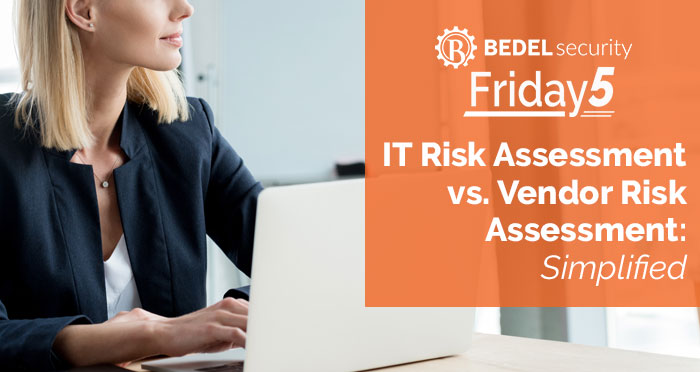Control Assessments Vs. Risk Assessments
When we first start working with new institutions, it is not unusual for us to see them struggling because they have focused their efforts on...
2 min read
Trisha Durkin : Aug 22, 2025

When it comes to managing cybersecurity risk in community financial institutions, there’s often confusion between two key activities: the Information Security Risk Assessment and a framework-based self-assessment (like the NIST Cybersecurity Framework (CSF) or the Cyber Risk Institute (CRI) Profile).
While they may sound similar and even overlap in certain areas, they serve very different purposes. If your institution is only completing one, you could be leaving gaps in your security posture, compliance obligations, or even your board reporting.
Let’s break down the differences and why both are essential.
An Information Security Risk Assessment (ISRA) is a risk-based analysis of your systems, data, and operations. The purpose? To identify actual threats and vulnerabilities that could impact your institution and determine how likely and how severe those risks might be.
It typically includes:
This assessment is all about context. It’s specific to your institution, your environment, and your tolerance for risk. And it’s required under GLBA and FFIEC guidance.
A cybersecurity self-assessment, like the CAT Tool, NIST CSF 2.0, or the CRI Profile, helps you measure how mature and complete your security program is, regardless of specific threats. These frameworks are designed to promote best practices across functions like:
The goal of a self-assessment is to evaluate how well your institution has implemented these controls, and to help you identify opportunities for improvement.
This is a standards-based evaluation, not a risk-based one. It helps ensure that your cybersecurity program aligns with recognized industry expectations and gives you a consistent structure for communicating maturity to your board or examiners.
|
Feature |
Information Security Risk Assessment |
Cybersecurity Framework Self-Assessment |
|
Focus |
Threats and vulnerabilities unique to the institution |
Maturity and completeness of cybersecurity controls |
|
Perspective |
Customized and risk-based |
Industry-standard and process-based |
|
Output |
Risk ratings and action plans |
Capability scores and improvement roadmap |
|
Purpose |
Prioritize based on likelihood and impact |
Benchmark against best practices |
Think of it this way:
Completing one without the other can give you a false sense of security. You might have strong policies and controls in place, but if they don’t address your most pressing risks, you may still be vulnerable. Likewise, even the most detailed risk assessment won’t help much if you don’t have the internal structure or maturity to act on the findings.
Both assessments serve different, but complementary, purposes:
Together, they provide a well-rounded, defensible view of your cybersecurity posture, something your board, auditors, and regulators will expect more of in today’s threat environment.
At Bedel Security, we help community banks and credit unions navigate both the risk-based and framework-based sides of cybersecurity. If you're not sure where you stand or what examiners will expect, reach out to our team. We make it make sense.

When we first start working with new institutions, it is not unusual for us to see them struggling because they have focused their efforts on...

In our work, we're finding that banks and credit unions are still struggling to differentiate between vendor risk assessments and information...

1 min read
With the upcoming sunset of the FFIEC Cybersecurity Assessment Tool (CAT) in less than three months, community banks are beginning to get nervous...